Redefining comorbidity understanding in rheumatoid arthritis through novel approaches using real-world data
Rheumatoid arthritis (RA) is a prevalent chronic disease that is associated with numerous comorbidities. Accurate assessment of these coexisting conditions, as reported by clinicians, is critical fo
[...] Read more.
Rheumatoid arthritis (RA) is a prevalent chronic disease that is associated with numerous comorbidities. Accurate assessment of these coexisting conditions, as reported by clinicians, is critical for an improved understanding of the impact of the disease and patient care. This perspective aims to evaluate the utility of real-world data (RWD) for enhancing the understanding of comorbidities in RA and to assess its potential in reshaping clinical management. RWD approaches, specifically the use of structured databases or data extracted from electronic health records, offer promising alternatives to overcome the limitations of traditional methodologies. Structured databases provide a systematic approach to data analysis, utilizing diagnosis codes to study large patient cohorts, revealing the prevalence of conditions, and demonstrating the potential for long-term disease trend analysis. Meanwhile, natural language processing (NLP) and artificial intelligence (AI) image analysis can bridge the gap between structured and unstructured data, by extracting meaningful information from unstructured fields such as free text or imaging. NLP has proven effective in the identification of RA patients and research outcomes, while AI image analysis has enabled the discovery of hidden findings in cardiovascular assessments, establishing a basis for the assessment of comorbidities in RA. However, while the benefits of using RWD are substantial, challenges remain. Ensuring comprehensive data capture, managing missing data, and improving data detection are key areas requiring attention. The involvement of clinicians and researchers in rheumatology is crucial in unlocking the potential of RWD studies, offering the promise of significant improvements in disease characterization and patient health outcomes.
Diego Benavent, Chamaida Plasencia-Rodríguez
View:1135
Download:17
Times Cited: 0
Rheumatoid arthritis (RA) is a prevalent chronic disease that is associated with numerous comorbidities. Accurate assessment of these coexisting conditions, as reported by clinicians, is critical for an improved understanding of the impact of the disease and patient care. This perspective aims to evaluate the utility of real-world data (RWD) for enhancing the understanding of comorbidities in RA and to assess its potential in reshaping clinical management. RWD approaches, specifically the use of structured databases or data extracted from electronic health records, offer promising alternatives to overcome the limitations of traditional methodologies. Structured databases provide a systematic approach to data analysis, utilizing diagnosis codes to study large patient cohorts, revealing the prevalence of conditions, and demonstrating the potential for long-term disease trend analysis. Meanwhile, natural language processing (NLP) and artificial intelligence (AI) image analysis can bridge the gap between structured and unstructured data, by extracting meaningful information from unstructured fields such as free text or imaging. NLP has proven effective in the identification of RA patients and research outcomes, while AI image analysis has enabled the discovery of hidden findings in cardiovascular assessments, establishing a basis for the assessment of comorbidities in RA. However, while the benefits of using RWD are substantial, challenges remain. Ensuring comprehensive data capture, managing missing data, and improving data detection are key areas requiring attention. The involvement of clinicians and researchers in rheumatology is crucial in unlocking the potential of RWD studies, offering the promise of significant improvements in disease characterization and patient health outcomes.
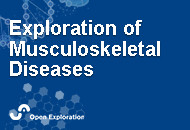 Newborn hip screening experience in TürkiyeOpen AccessMini ReviewIn this review article, newborn hip screening experience in Türkiye was summarized. The nationwide newborn hip screening program was officially initiated in 2013. The program currently includes the [...] Read more.Hakan Ömeroğlu ... Feza KorkusuzPublished: February 18, 2024 Explor Musculoskeletal Dis. 2024;2:69–74
Newborn hip screening experience in TürkiyeOpen AccessMini ReviewIn this review article, newborn hip screening experience in Türkiye was summarized. The nationwide newborn hip screening program was officially initiated in 2013. The program currently includes the [...] Read more.Hakan Ömeroğlu ... Feza KorkusuzPublished: February 18, 2024 Explor Musculoskeletal Dis. 2024;2:69–74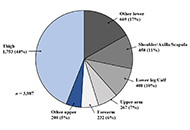 Soft tissue sarcoma: clinical recognition and approach to the loneliest cancerOpen AccessReviewSoft tissue sarcoma (STS) is a rare malignancy with a high incidence. Early diagnosis can reduce the rate of amputations and increase survival, however, this is typically delayed. The diagnosis and [...] Read more.Sujan Shakya ... Xiang ZhouPublished: February 06, 2024 Explor Musculoskeletal Dis. 2024;2:56–68
Soft tissue sarcoma: clinical recognition and approach to the loneliest cancerOpen AccessReviewSoft tissue sarcoma (STS) is a rare malignancy with a high incidence. Early diagnosis can reduce the rate of amputations and increase survival, however, this is typically delayed. The diagnosis and [...] Read more.Sujan Shakya ... Xiang ZhouPublished: February 06, 2024 Explor Musculoskeletal Dis. 2024;2:56–68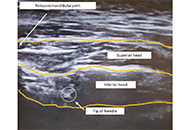 Participatory action ultrasound imaging in increasing clinician confidence with new approaches to trigger point dry needling of the lateral pterygoidOpen AccessCase ReportUpon self-reflection, some clinicians privately confess a lack of confidence in being able to safely perform trigger point dry needling (TrPDN) or trigger point injection (TrPI) on craniofacial musc [...] Read more.Andrew Ball ... Jordan SpennatoPublished: February 05, 2024 Explor Musculoskeletal Dis. 2024;2:49–55
Participatory action ultrasound imaging in increasing clinician confidence with new approaches to trigger point dry needling of the lateral pterygoidOpen AccessCase ReportUpon self-reflection, some clinicians privately confess a lack of confidence in being able to safely perform trigger point dry needling (TrPDN) or trigger point injection (TrPI) on craniofacial musc [...] Read more.Andrew Ball ... Jordan SpennatoPublished: February 05, 2024 Explor Musculoskeletal Dis. 2024;2:49–55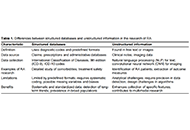 Redefining comorbidity understanding in rheumatoid arthritis through novel approaches using real-world dataOpen AccessPerspectiveRheumatoid arthritis (RA) is a prevalent chronic disease that is associated with numerous comorbidities. Accurate assessment of these coexisting conditions, as reported by clinicians, is critical fo [...] Read more.Diego Benavent, Chamaida Plasencia-RodríguezPublished: February 01, 2024 Explor Musculoskeletal Dis. 2024;2:40–48
Redefining comorbidity understanding in rheumatoid arthritis through novel approaches using real-world dataOpen AccessPerspectiveRheumatoid arthritis (RA) is a prevalent chronic disease that is associated with numerous comorbidities. Accurate assessment of these coexisting conditions, as reported by clinicians, is critical fo [...] Read more.Diego Benavent, Chamaida Plasencia-RodríguezPublished: February 01, 2024 Explor Musculoskeletal Dis. 2024;2:40–48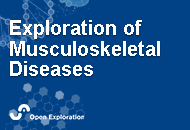 Multifaceted aspects of chronic disease: do diffuse idiopathic skeletal hyperostosis affect the quality of life?Open AccessReviewDiffuse idiopathic skeletal hyperostosis (DISH) is a common condition that affects the spine and peripheral joints, characterized by the progressive ossification of ligaments and tendons. It is a no [...] Read more.Greta Pellegrino ... Piercarlo Sarzi-PuttiniPublished: January 23, 2024 Explor Musculoskeletal Dis. 2024;2:31–39
Multifaceted aspects of chronic disease: do diffuse idiopathic skeletal hyperostosis affect the quality of life?Open AccessReviewDiffuse idiopathic skeletal hyperostosis (DISH) is a common condition that affects the spine and peripheral joints, characterized by the progressive ossification of ligaments and tendons. It is a no [...] Read more.Greta Pellegrino ... Piercarlo Sarzi-PuttiniPublished: January 23, 2024 Explor Musculoskeletal Dis. 2024;2:31–39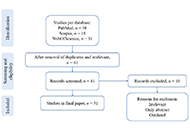 Scoping review on remote disease monitoring in rheumatoid arthritis: does it actually help the patient?Open AccessReviewRemote monitoring technologies (RMTs) are an emerging tool for assessing, monitoring, and following up on patients with chronic diseases including autoimmune rheumatic diseases (AIRDs). The best use [...] Read more.Prakashini Mruthyunjaya ... Debashish DandaPublished: January 22, 2024 Explor Musculoskeletal Dis. 2024;2:20–30
Scoping review on remote disease monitoring in rheumatoid arthritis: does it actually help the patient?Open AccessReviewRemote monitoring technologies (RMTs) are an emerging tool for assessing, monitoring, and following up on patients with chronic diseases including autoimmune rheumatic diseases (AIRDs). The best use [...] Read more.Prakashini Mruthyunjaya ... Debashish DandaPublished: January 22, 2024 Explor Musculoskeletal Dis. 2024;2:20–30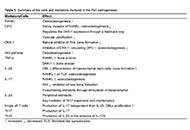 Psoriasis, bone and bowel: a comprehensive review and new insightsOpen AccessReviewPsoriasis is a chronic immune-mediated disorder affecting about 2% of the population worldwide which is associated with significant morbidity. The disease usually presents as raised, well-demarcated [...] Read more.Fakhreddin SaboonihaPublished: January 18, 2024 Explor Musculoskeletal Dis. 2024;2:1–19
Psoriasis, bone and bowel: a comprehensive review and new insightsOpen AccessReviewPsoriasis is a chronic immune-mediated disorder affecting about 2% of the population worldwide which is associated with significant morbidity. The disease usually presents as raised, well-demarcated [...] Read more.Fakhreddin SaboonihaPublished: January 18, 2024 Explor Musculoskeletal Dis. 2024;2:1–19